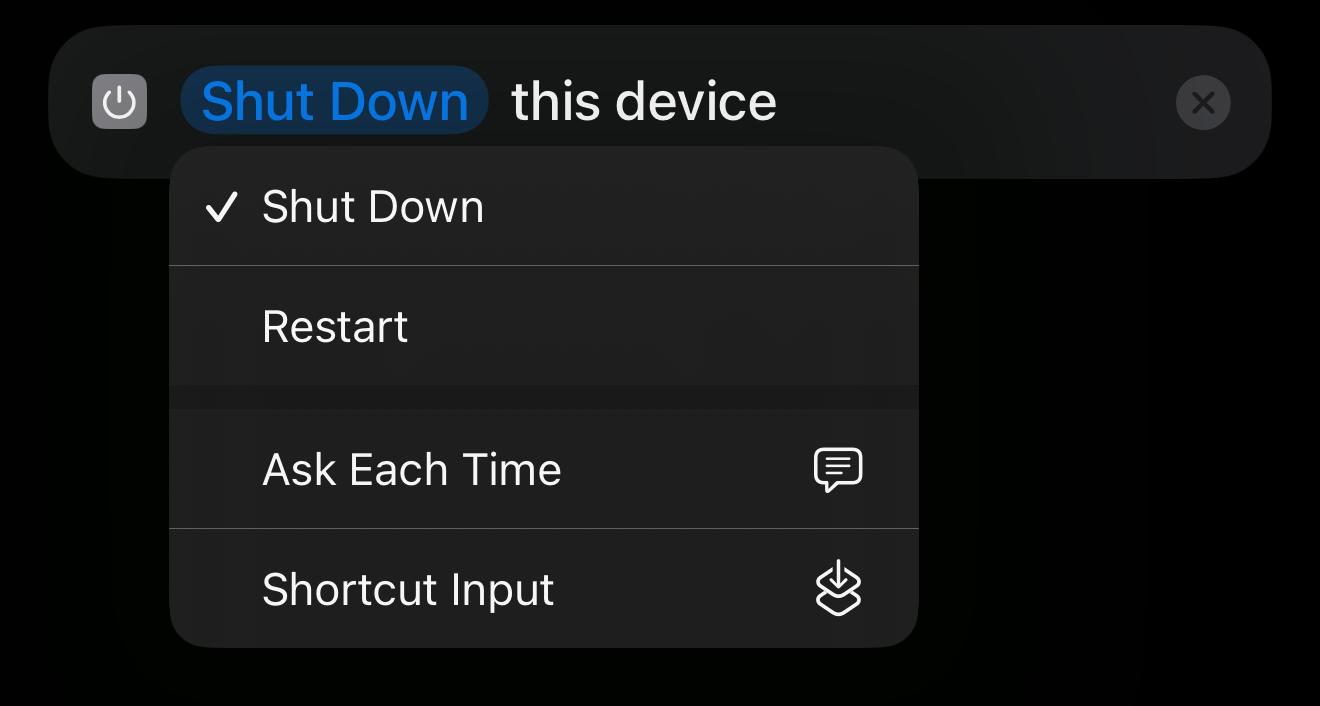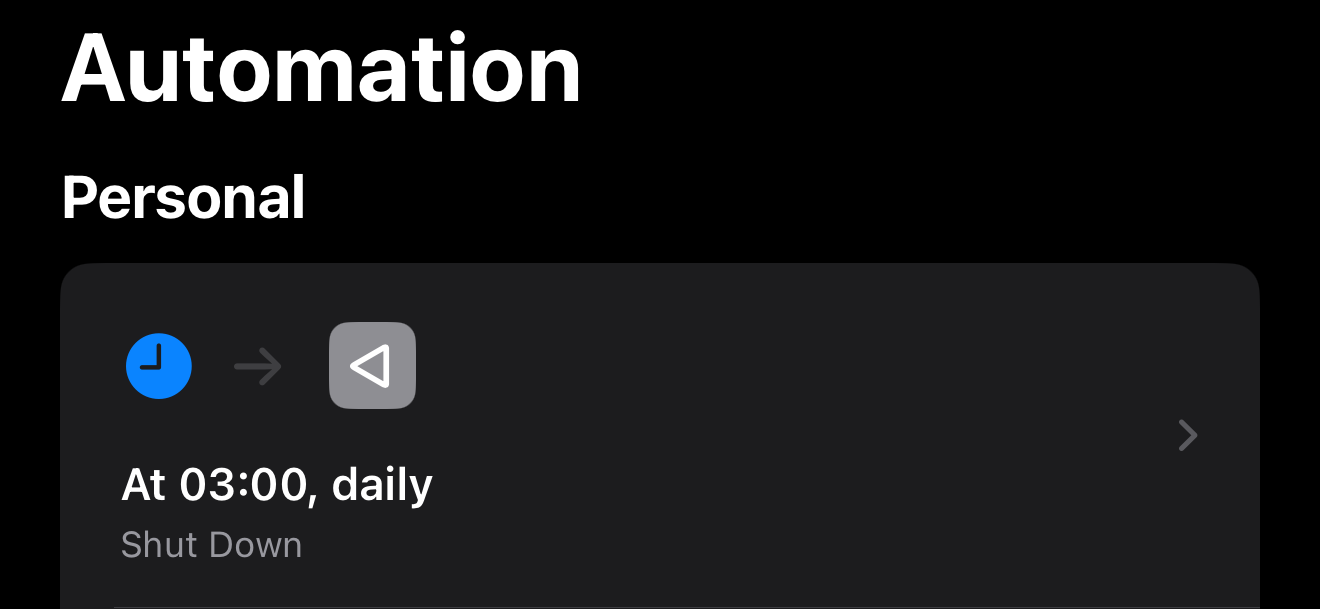

As the linked screenshot shows, you have the option to choose between shutting down and rebooting. There is no need to explain the difference to me, I demonstrated that the thing you want to do is possible.


As the linked screenshot shows, you have the option to choose between shutting down and rebooting. There is no need to explain the difference to me, I demonstrated that the thing you want to do is possible.


You can, see my other comment: https://feddit.org/comment/3001525


That’s not what I mean, I’m talking about the Shortcuts app:




There is a shortcut action to shut down the phone which you could trigger with an automation, I suppose.


This article seems to imply they’ll withdraw charges for all parties, but the statement reads like they will only withdraw charges for the people confirmed dead…? Which is it


That was my first thought. But then (before reading the questions) I also imagined other similar scenarios like with a soccer ball and my desk at work, lol.
My experience with this experiment was kind of like when they play memory flashbacks in movies, I could see the ball being pushed and falling, but with jump cuts and the timing was off. Detail-wise I’d say it was kinda like what you got from AI image generation when Dall-E first came out two-ish years ago.
I don’t think I have the most visual imagination out there but if aphantasia is one end of the scale I’m pretty far to the other side.


because the earth is big and you don’t have a hard drive big enough to store it locally?


They’re not super common. I don’t see one every single time I go grocery shopping, though I would say typically there are maybe one or two recalls posted somewhere in the store at a time. Most I’ve seen at once is four, maybe a year or so ago, but they also keep the signs up for a few weeks so they didn’t happen all at once.
They do always have either a picture of the product or at least the name prominently placed, so you can glance at it to see whether it’s about something you might have bought.


In Germany, supermarkets typically post product recalls right on the doors or over the shelves of the section that has the affected products. I guess if you bought something you might be less likely to go down that aisle again next time and come across the sign, but (barring a big empty space at the entrance) I think that’s the most reasonable place for them to be


Not to mention the law firm they hired advertises anti-union action, so that should tell you whether they can be trusted to be fair to workers…


Imagine you have to choose a health insurance company to be insured with like you choose a credit card (Visa, Mastercard, etc). Many doctors (shops) only accept certain insurance providers (cards) due to fees and other regulations.
The problem described in this article is when your insurance lists doctors that you can go to that will accept your insurance, but most of them have gone out of business or actually don’t accept your particular insurance anymore.
Well yes, I was simplifying because I wanted to address the main (incorrect) criticism by @spartanatreyu@programming.dev. I agree with your comment
Yeah, in Java calling first() on a stream is the same as an early return in a for-loop, where for each element all of the previous stream operations are applied first.
So the stream operation
cars.stream()
.filter(c -> c.year() < 1977)
.first()
is equivalent to doing the following imperatively
for (var car : cars) {
if (car.year() < 1977) return car;
}
Not to mention Kotlin actually supports non-local returns in lambdas under specific circumstances, which allows for even more circumstances to be expressed with functional chaining.
…what? At least with Java Streams or Kotlin Sequences, they absolutely abort early with something like .filter().first().
IntelliJ finds most uses in my experience unless you’re doing something weird with reflection or similar. And if it’s a public facing API only used by the library’s consumers…– it should be used in tests at the very least! Especially if it’s prone to regressions like the comment suggests


If you read the linked article you will find that exterior cameras feeds are plenty invasive enough.


I don’t think they have interior cameras (although other manufacturers do), but the front and backup camera feeds provide plenty of information as well.
Then there’s also this, if you need any more reason to be concerned.
I believe it should still work, as alarms trigger for me even if my phone updated overnight or I put it on the charger dead before going to sleep, but I’ll have to test it